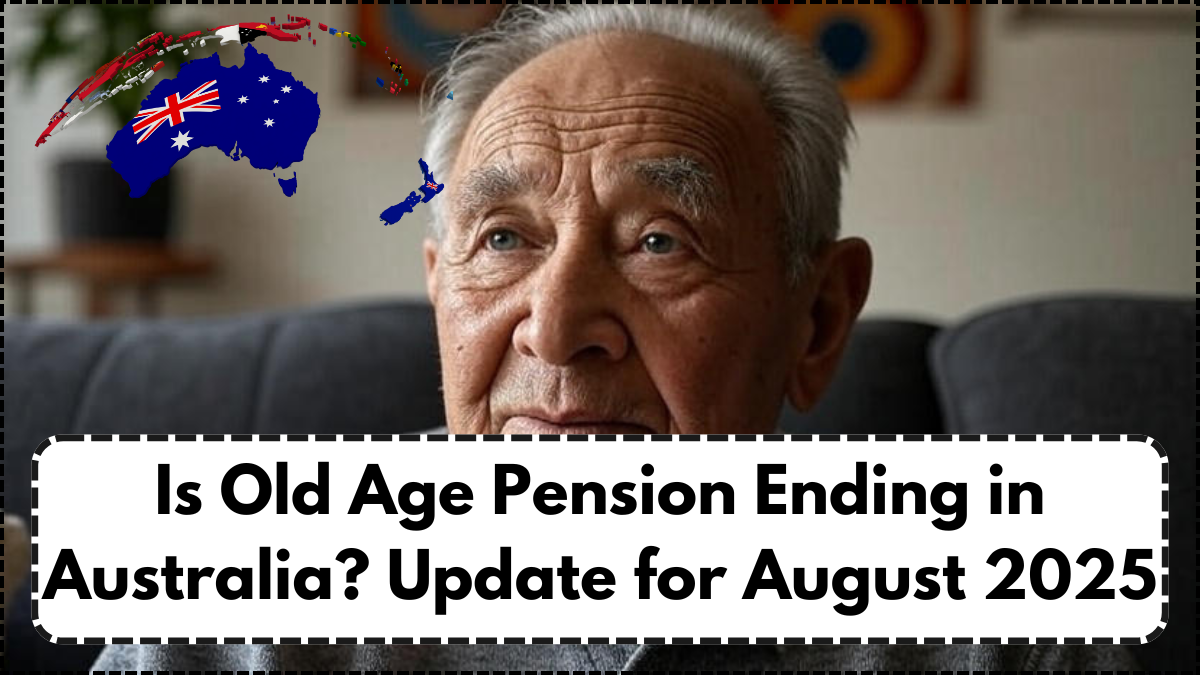With ongoing reforms in Centrelink’s welfare policies, many Australians are left asking: Is the Old Age Pension ending in Australia? As of August 2025, there are significant developments you should be aware of—particularly if you’re nearing retirement or currently receiving age-related benefits.
The federal government has signaled a strong push toward gradually reshaping Australia’s pension system. While pensions aren’t being “eliminated” entirely, the Old Age Pension Changes Australia are real, and they focus on new age thresholds, tighter eligibility rules, and a clearer link to superannuation savings. These shifts are especially relevant in the context of the retirement age rule change, which has been quietly advancing behind the scenes.
Whether you’re approaching retirement age or planning your financial future, understanding these changes now is more important than ever.

What Is the Age Pension and Why Is It Changing?
The Age Pension is a bi-weekly payment from Centrelink meant to support eligible Australians aged 67 or above who meet income and asset thresholds. However, the rising life expectancy, longer retirement periods, and growing pressure on the welfare system have prompted the government to reevaluate how and when pensions should be distributed.
Key reasons for reform include:
-
The average Australian now lives into their 80s
-
Superannuation balances are higher than in previous decades
-
Budget constraints due to aging population trends
-
Fairer distribution of welfare to low-income groups
These considerations have led to sweeping Old Age Pension Changes Australia, including the proposed retirement age rule change, which aims to push pension eligibility further.
What’s Changing in August 2025?
As of August 2025, the government is introducing adjustments that may significantly impact upcoming pensioners. The following are confirmed or under policy review:
-
Retirement Age Rule Change: The qualifying age for Centrelink’s Age Pension will officially move to 67 years and 6 months starting this month, with proposals to lift it to 68 by 2026.
-
Tighter Asset Tests: Property equity over $1.2 million (excluding primary residence) may now reduce or disqualify pension entitlements.
-
Means Test Adjustments: Superannuation drawdowns will be more closely scrutinized under the income test from August 2025 onward.
-
Digital Self-Reporting: Centrelink will implement automated tracking for income and assets, replacing traditional paper reporting for pensioners.
Age Pension Eligibility Rules – August 2025
| Criteria | Before August 2025 | After August 2025 |
|---|---|---|
| Minimum Age | 67 | 67 years 6 months |
| Full Asset Test Limit (single) | $656,500 | $625,000 (proposed) |
| Full Income Test (single) | $204/week | $190/week (proposed) |
| Homeownership Exemption | Primary residence exempt | No change |
| Superannuation Assessment | Based on drawdown only | Includes unrealized gains |
These changes underline the government’s strategy to gradually tighten access without outright removing benefits, making the Old Age Pension Changes Australia a transition rather than a termination.
What About the Future – Is the Pension Being Phased Out?
While there’s no official plan to completely cancel the Age Pension, long-term trends suggest a shift toward superannuation dependency and delayed pension access. The government appears to be building a system where most middle-income retirees rely more on private retirement savings than government benefits.
This transition raises concern among Australians with minimal super savings, especially those who’ve worked in lower-income sectors or with interrupted careers. Although the retirement age rule change seems modest now, further increases are expected over the next five years unless new welfare funding is allocated.
Who Is Affected Most?
The most affected Australians include:
-
Workers born after January 1958, who now must wait longer to qualify
-
Non-homeowners with moderate savings who will struggle to pass asset tests
-
Individuals transitioning from Newstart or JobSeeker into retirement
-
Those who retired early due to health but now fall short of age criteria
With the Old Age Pension Changes Australia now active, it’s vital for anyone nearing retirement to consult a financial advisor or Centrelink representative to reassess timelines and expectations.
Conclusion
The Age Pension isn’t being scrapped, but the Old Age Pension Changes Australia confirm that the government is realigning retirement benefits toward sustainability. Through the retirement age rule change, new asset tests, and income adjustments, Centrelink is encouraging Australians to rely more on their superannuation and delay drawing from public funds.
If you’re planning your retirement in the next few years, these updates will play a critical role in shaping your decisions. Stay informed, start planning earlier, and prepare for a system that’s gradually shifting responsibility onto individual savings.
FAQs
Is the Age Pension ending in Australia?
No, but the government is tightening eligibility rules and increasing the minimum qualifying age under the Old Age Pension Changes Australia policy shift.
What is the new retirement age in Australia?
As of August 2025, the retirement age for accessing the Age Pension will increase to 67 years and 6 months. It may rise to 68 by 2026.
What counts toward the pension assets test?
Centrelink counts investments, vehicles, and property (excluding your main home). Superannuation balances are also considered once you reach pension age.
Will pension payments be reduced?
Payment rates remain stable, but more Australians may receive reduced benefits due to stricter asset and income testing under the retirement age rule change.
How can I prepare for these pension changes?
Start by boosting your superannuation contributions, speaking with a retirement planner, and staying updated on Centrelink announcements regarding age pension rules.
Click here to learn more



